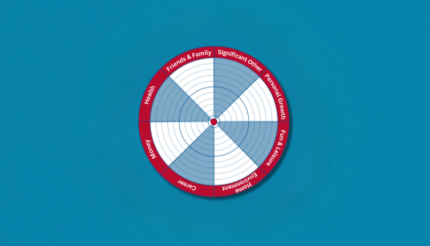Building a successful, profitable business can happen only when you have covered the bases. We call it Business Mastery, and it’s the first step towards growing a successful business that can function without you.
The four pillars of Business Mastery are:
- Destination
- Money
- Time
- Delivery
Today, you’re going to learn everything you need to know about the consistent delivery of your products and services, so that you can retain your clients and bring in consistent revenue.
Profit Comes from Customer Retention
Delivery is essential when building a successful business, because it enables you to keep your clients satisfied. In other words, you need to amaze your customers with excellent products or services, after-sale care, and customer support You want to wow people who buy from you.
Brad Sugars, ActionCOACH founder and CEO, advises business owners to under-promise and over-deliver to delight your customers. For example, if your client expects your product to be delivered on a Saturday morning, consider sending it on Friday. Take care though. Depending on the industry and type of activity, such an action could create problems at your client’s end. In that case, you want to make sure you find a different way to under-promise and over-deliver so that you provide an excellent customer experience.
If you want to boost your customer retention rate, you need to delight your customers beyond just doing the job you’ve been paid for doing. Show them you care about their needs and value your business relationship with them. Let’s learn how to do this.
Delivery Is About People and Processes
When you want to improve delivery, you must take care of two significant factors in your business:
- the people who work for you
- the processes they follow
When these two elements work well together, you will have consistency in preparation and delivery. This will please your customers and make them come back for more.
Before you start, ask yourself one question: Have you hired the right people? Realising quickly that you haven’t will be vital to improving delivery. Look at your people and evaluate whether they’re suitable for the job or if you need to find new employees.
If you have the right people, here’s how you can enhance delivery to increase retention.
1. Training Your Employees
Low or no training generates a lack of consistency when it comes to performance. If your staff don’t know how to do what you expect of them, they will not be able to deliver excellent products and services.
Remember, people are the most important asset of your company. You need to make sure they deliver on time, every time.
How can you achieve that? By building awareness and teaching them how to do their jobs:
Awareness
Every employee in your company should understand their role in the customer experience. Your people won’t do a great job if they don’t know how they fit into the big picture. So you need to share your expectations to help them understand.
Here’s a simple trick. Ask every employee to write down the ten most essential tasks in their job, then you make a similar list too. When you’re both done, compare the two lists to check that you and your employees are on the same page.
Training
If you grow your people, they’ll grow your business.
People can generally only perform at the level to which they’re trained. Find a way to educate your employees to bring their performance up to standard. Or beyond! Training is the only way you and your people get better — as the saying goes, “You don’t know what you don’t know”, and your employees will not be able to do what they haven’t learned.
In our modern, fast-moving and tech-driven world, you need to appreciate the importance of training. It is not fair to expect people to do jobs (or do them really well) if they have never been taught what to do.
The secret is to find the right trainers for your staff. Outsiders can bring new methods and processes as well as being specifically trained to teach particular skills. Familiarity not only breeds contempt, but it often doesn’t get the best results, so avoid simply assigning all training programmes to your management team or yourself. Plus it’s usually better to hire someone who has been professionally (and recently) trained, rather than just doing it yourself.
Note that training is meant to help your employees do their jobs better and perform to the best of their abilities. It’s not about you teaching them how to get to the next level in their career.
2. Standard Business Processes
Once your employees are trained to perform well, it’s time to focus on delivering the products and services you offer. The good news is that great people make great processes. However, you need to define these processes and ensure everyone knows them if you are going to have consistency in preparation and delivery.
Start by asking your employees about what you can do to improve customer experience. Your best ideas may come from them; after all, they’re on the frontline, dealing with customer complaints, problems and bottlenecks.
After brainstorming ideas, create checklists to follow. This way, you will build routines and good habits to secure consistency of delivery every time your people get in touch with a client.
Make a checklist for every relevant task within the organisation — document activities that are done every hour or every day in order to implement standard processes. Put the checklists on the job sheet and illustrate processes in flowcharts to help your staff remember how to complete tasks.
Besides fixing internal business operations, make sure you also take care of the external factors that can influence customer experience. For example, if your suppliers are often late, change them. Or perhaps order in bulk so that you always have things in stock and don’t have to delay orders due to a lack of materials.
Another way to increase efficiency and optimise processes is by outsourcing. Some things aren’t your core business, so think about hiring people on the outside to take care of them. As a result, you can focus on the essential operations … and find new ways to delight your customers.
Use Customer Feedback to Measure Performance
You want to listen to both compliments and complaints to get a complete image of how your customers perceive your brand. A business owner who does not want honest feedback from their customers will lose business.
Communication is essential. Use surveys to get in touch with previous customers and learn about their experience of your business. It’s an opportunity to fix issues and also perhaps get some repeat business.
The most effective method to evaluate customer satisfaction and predict business growth is the Net Promoter Score. You can calculate it very simply by using the answers to this question, “On a 0-10 scale, how likely is it that you would recommend our product/service to a friend or colleague?”
People who award a 9 or 10 are ‘promoters’ who will keep buying from you and referring new customers. A score of 7 or 8 shows satisfied customers who aren’t enthusiasts, so they’re quite likely to switch if they get a better offer from a competitor. People who select a score of 6 or below are unhappy customers. They could possibly even share negative reviews and damage your reputation among potential new clients.
Use surveys to find the problems in your business and fix them. Map the customer experience from start to finish and create a flowchart to help you visualise all the touchpoints. This way, you can eliminate bottlenecks and create a smooth and enjoyable experience every time for your customers.
Note that bottlenecks can take many forms: they can be due to a person who isn’t right for the role, a lack of equipment, or even a lack of training. Listen to complaints, find the mistakes, and eliminate bottlenecks.
What’s Next?
Start with documenting your customers’ experience. What are the step-by-step processes by which your product or service arrives at your customer? Use flowcharts to break these down into the smallest activities and identify any points where your staff fail to deliver excellent service.
Mistakes and bottlenecks won’t disappear if you choose to ignore them. Listen to your customers’ complaints and use their feedback. It will help you to understand what works and what needs to be improved.
Build the experience around your customer, not your business. Make things easy for them.
Keep a record of all the excuses that prevent you from delivering an excellent customer experience and then work to remove them. This way, you’ll create a system that delights your customers and brings more money into your company.
Let’s recap! Here is what you need to do to improve delivery:
- Survey customers and use their feedback to evaluate performance.
- Survey staff to see how they would improve processes to deliver a better customer experience.
- List ten tasks for each staff member and ensure employees know what’s expected from them.
- Identify bottlenecks and find ways to fix them.
- Use flowcharts to map all the touchpoints between your customers and your brand, then build the customer experience around them.
- Use checklists to remind your employees how to complete tasks to ensure consistency in preparation and delivery.
If you would like to find out more, sign up for a free coaching session where I’ll explain how to retain clients and make a profit.





